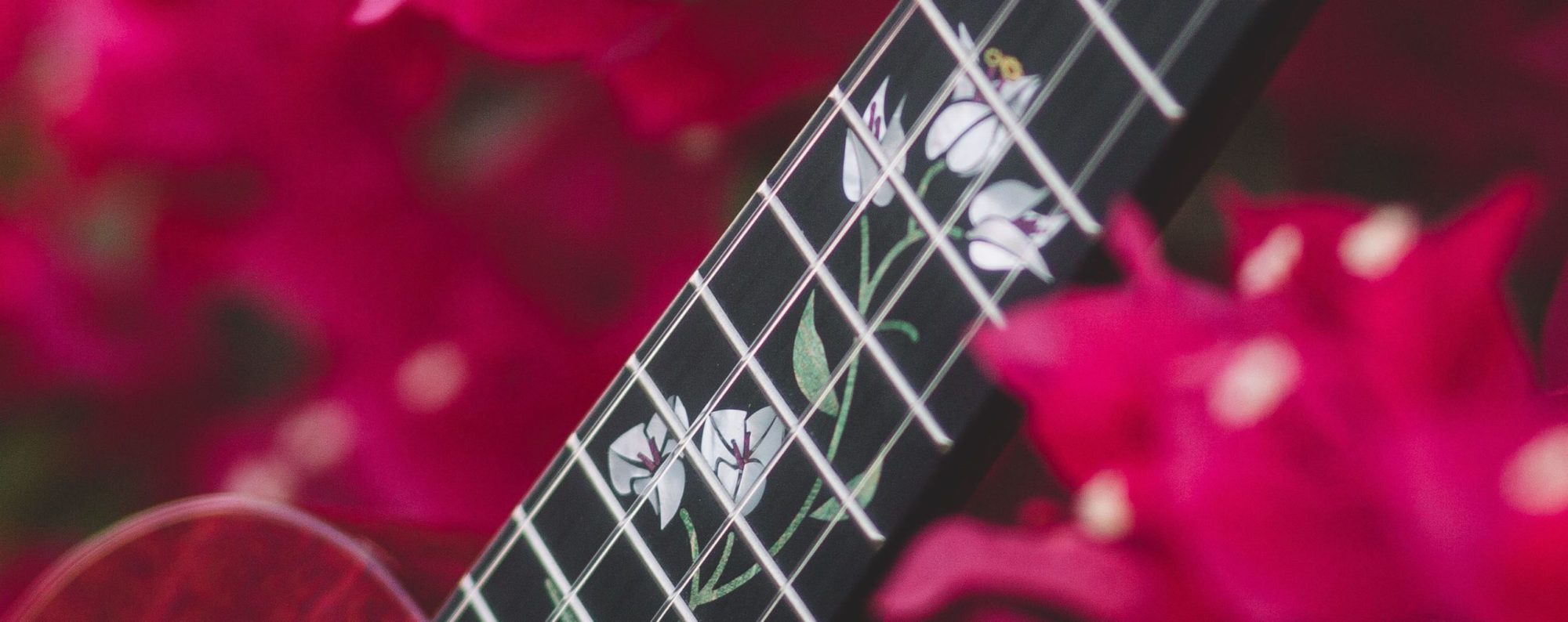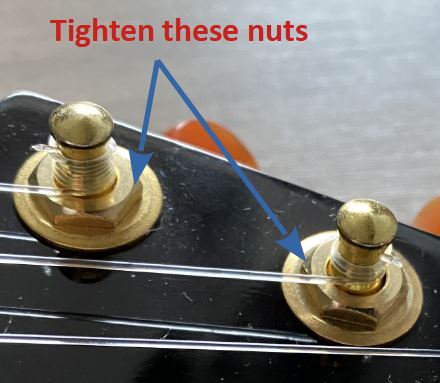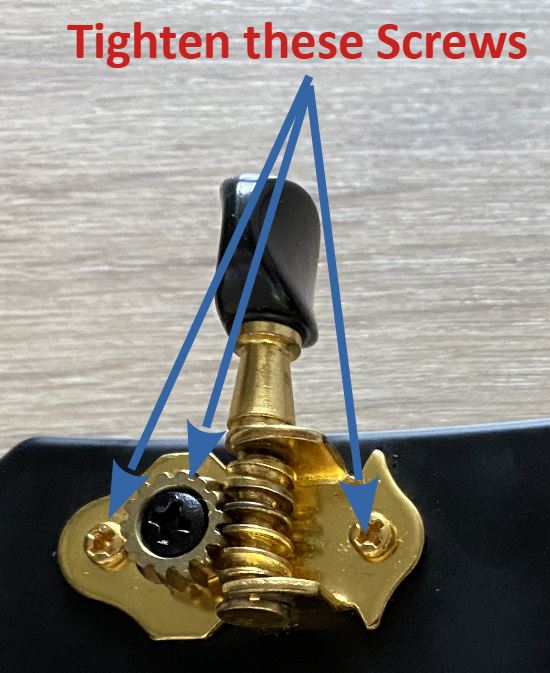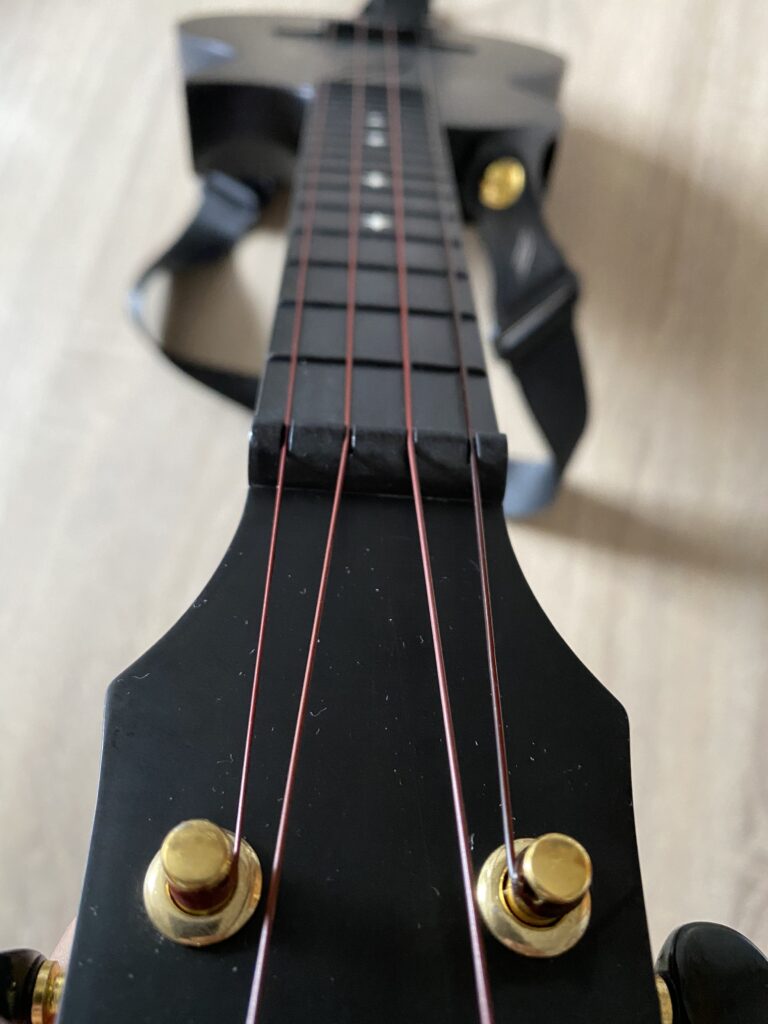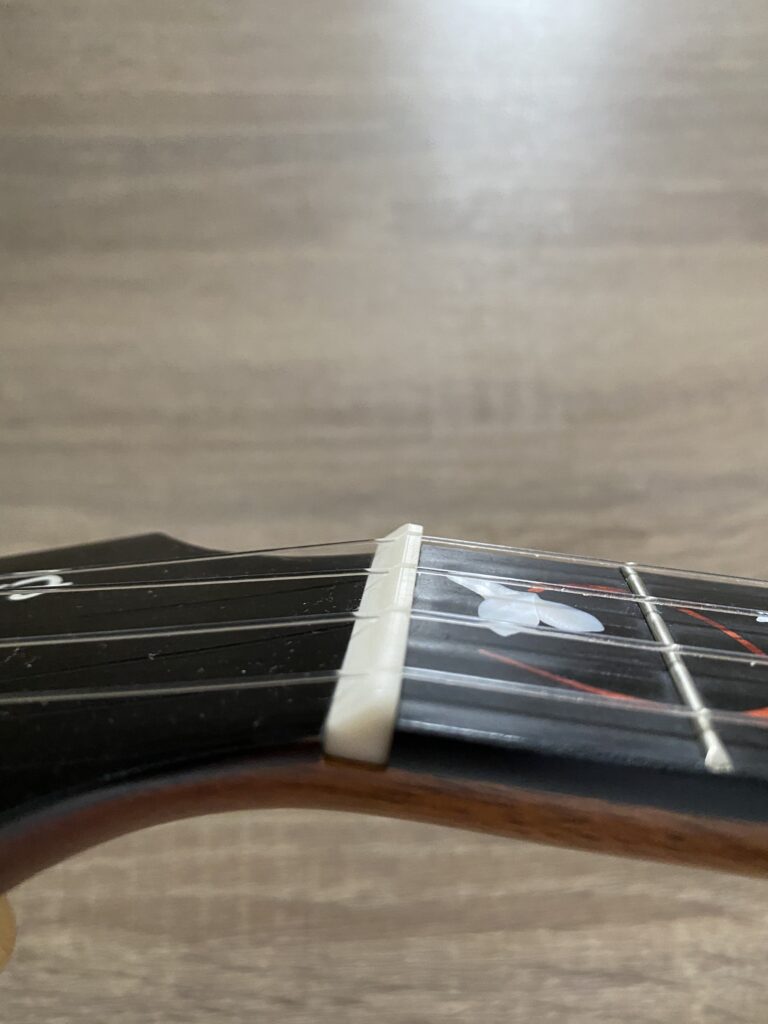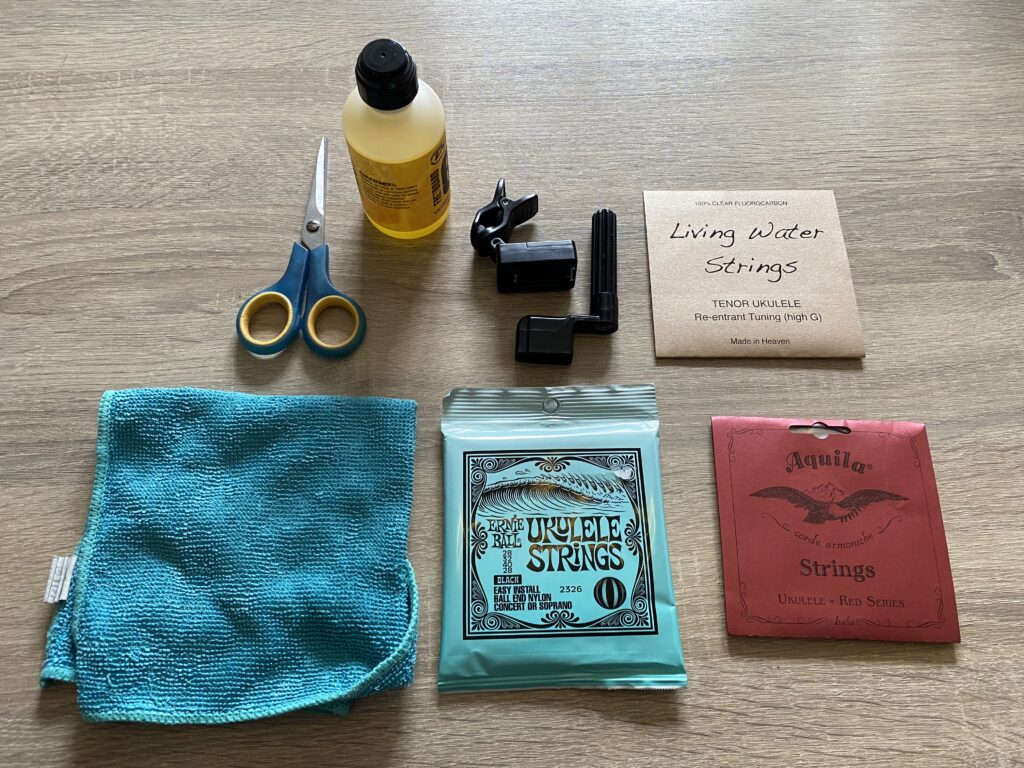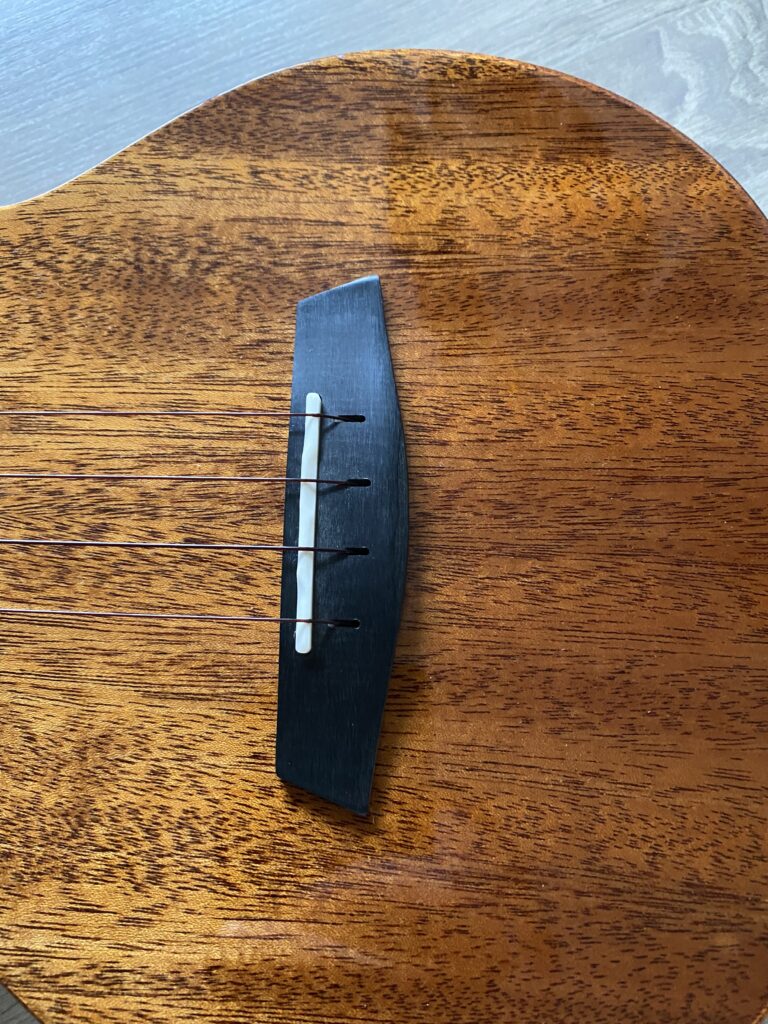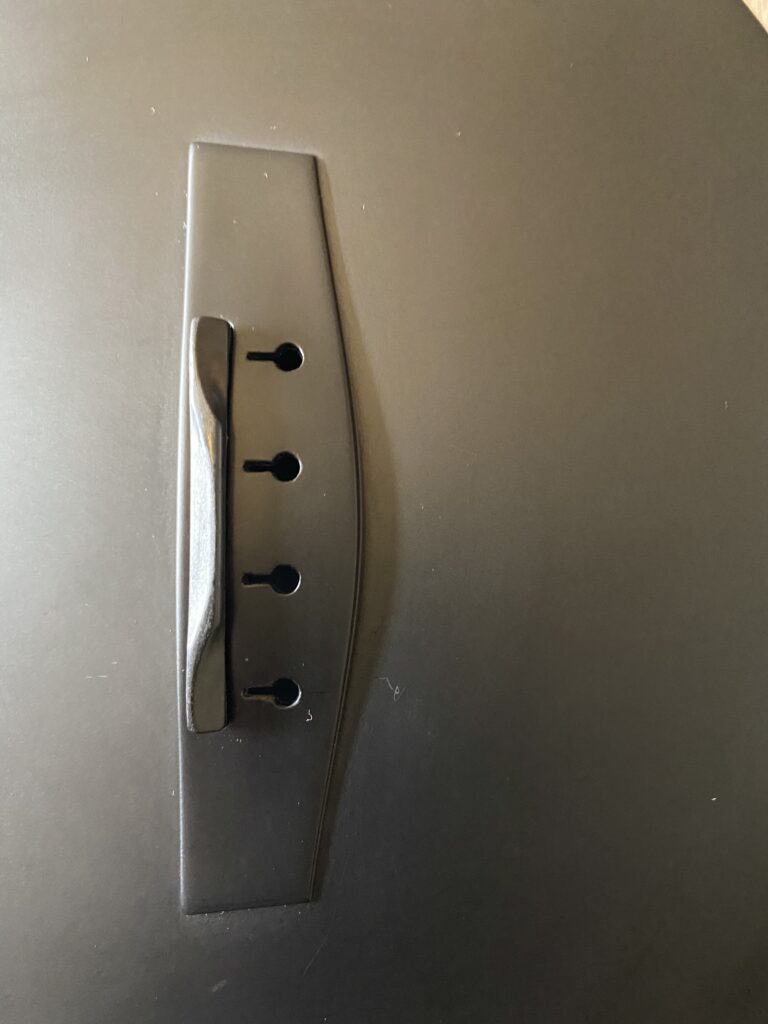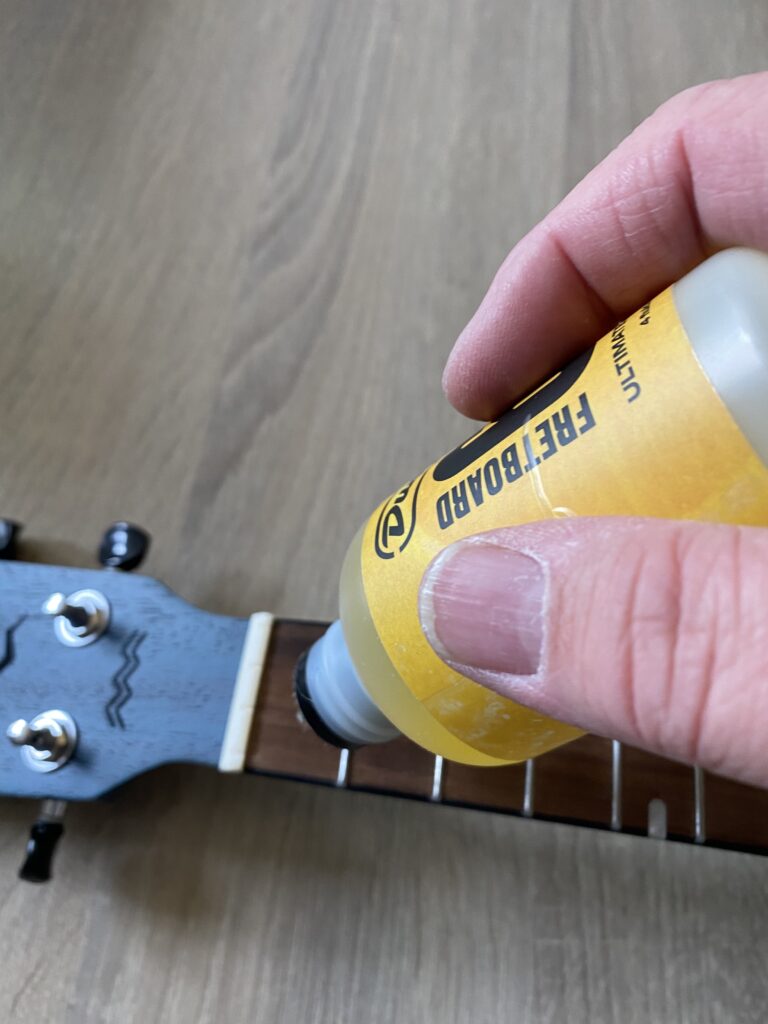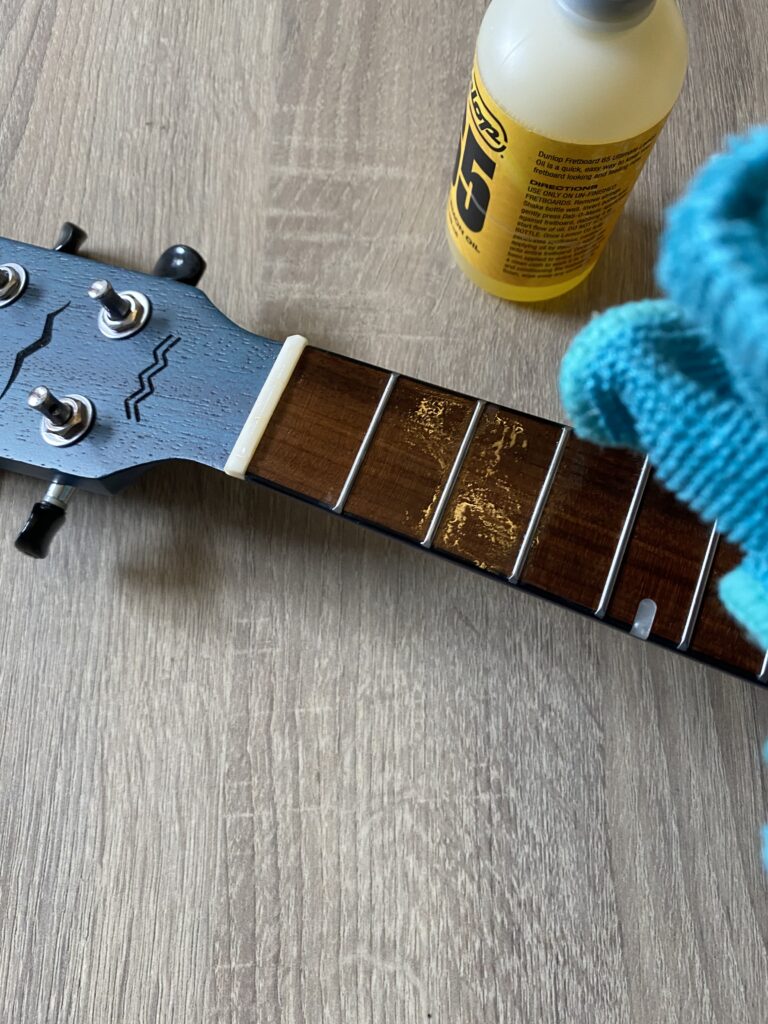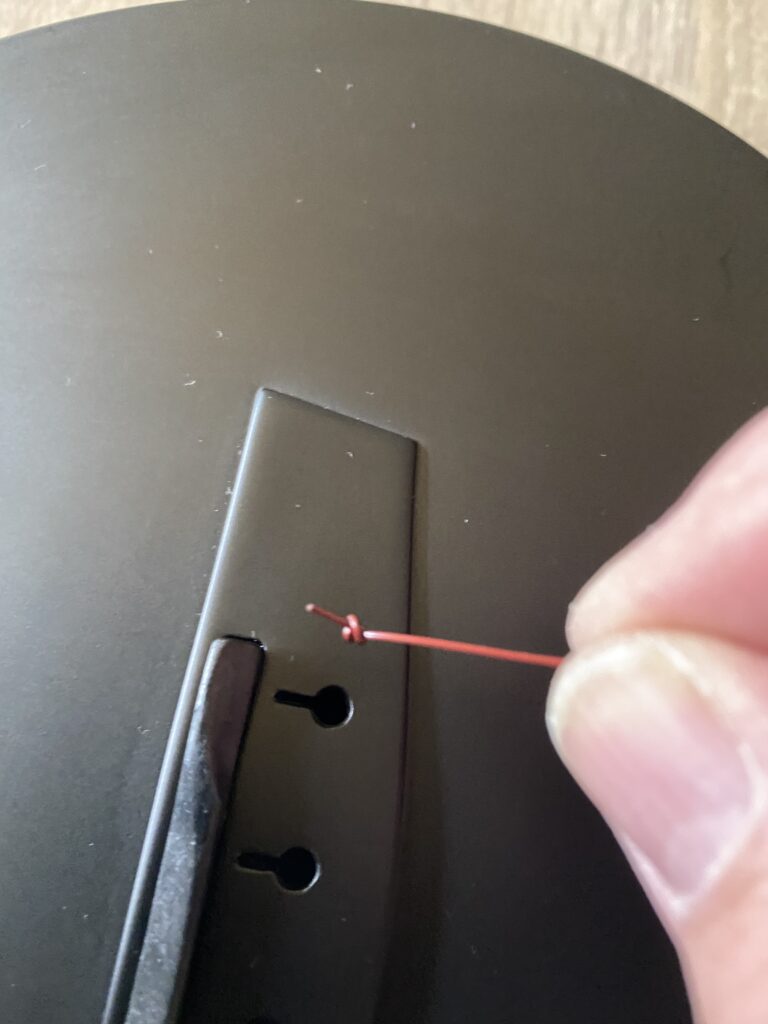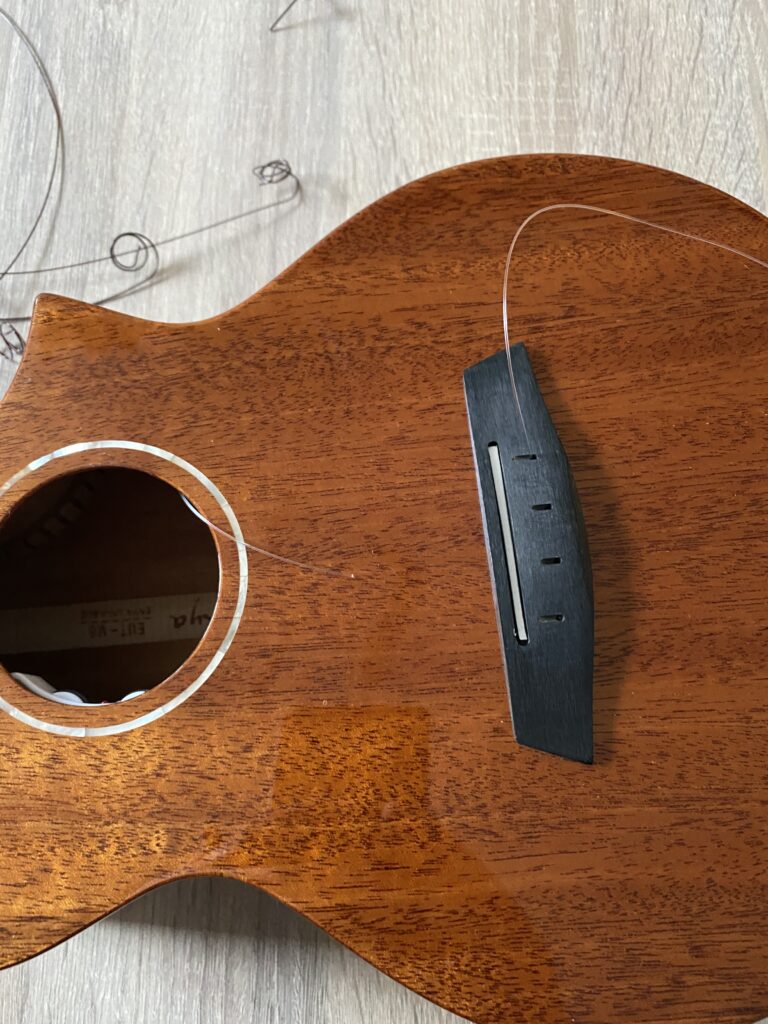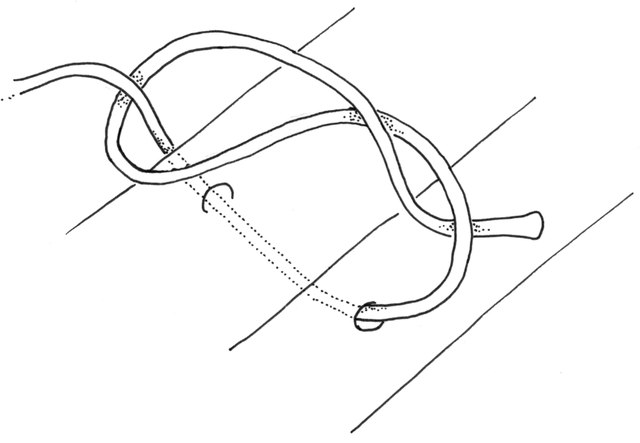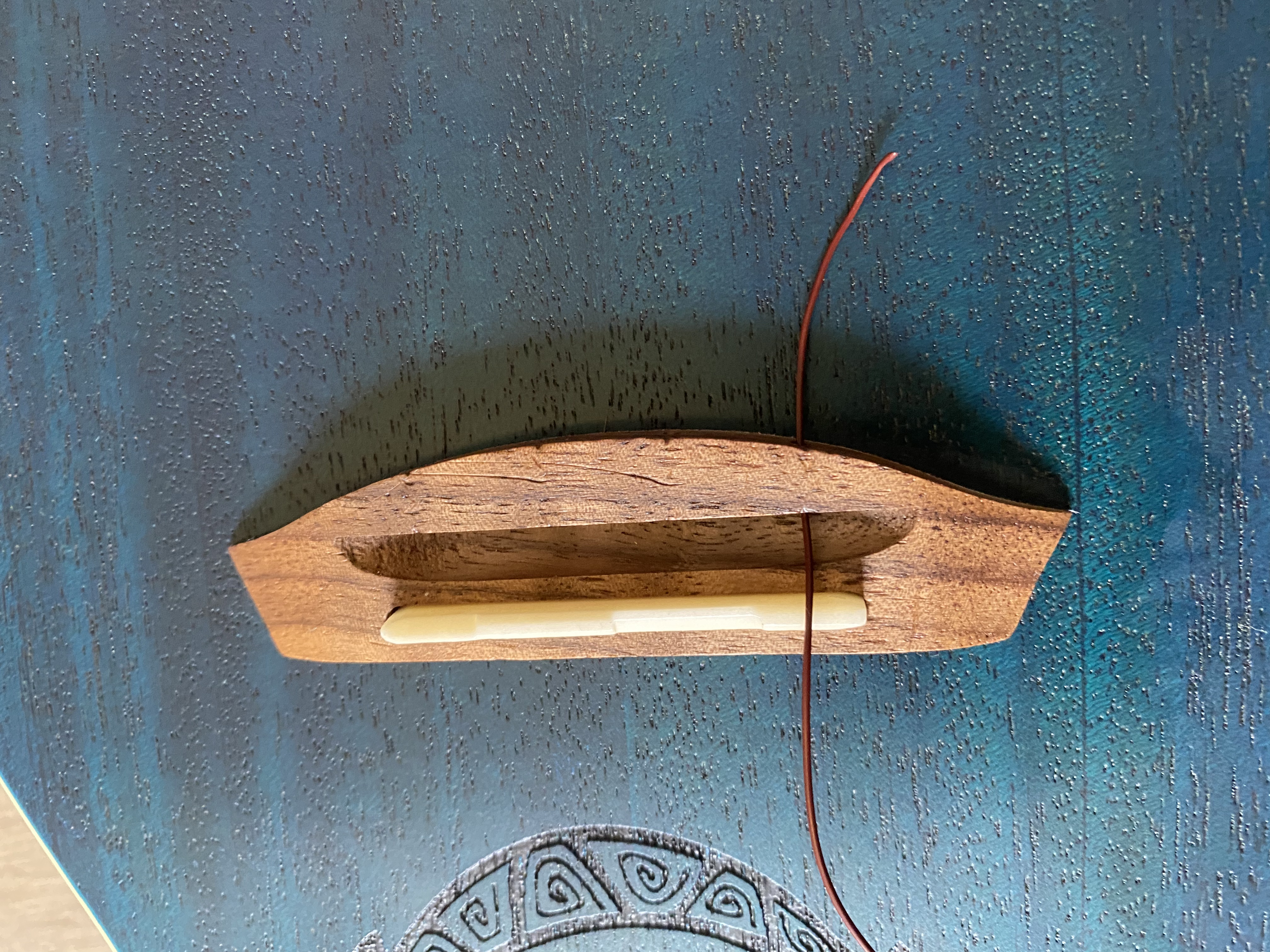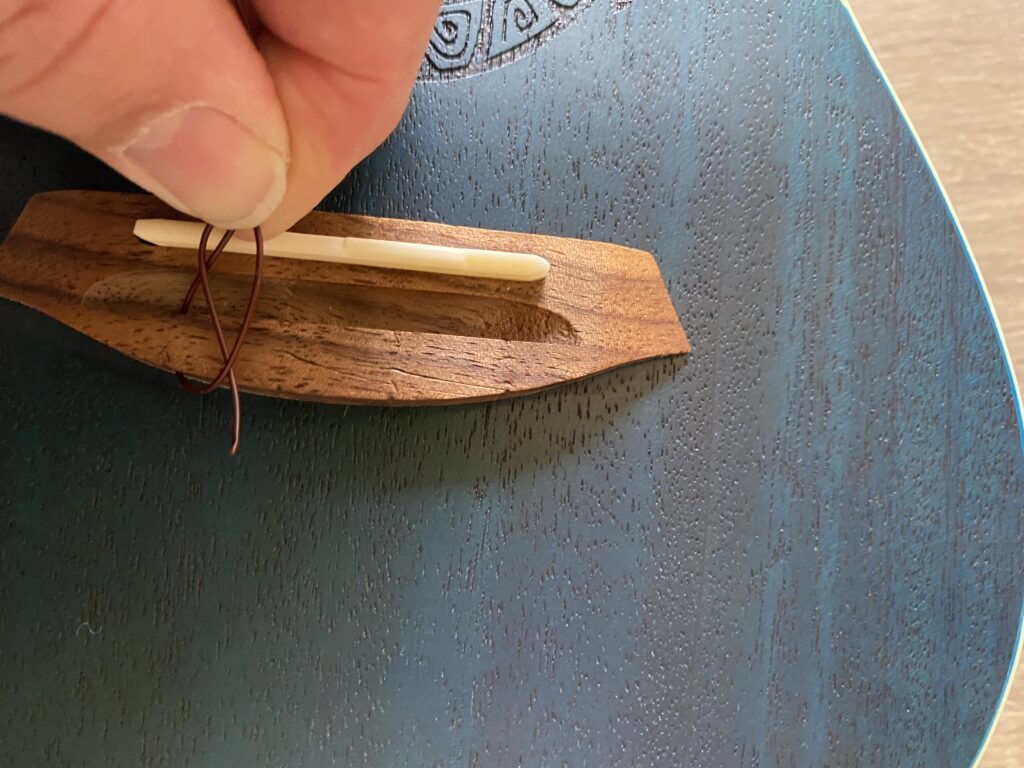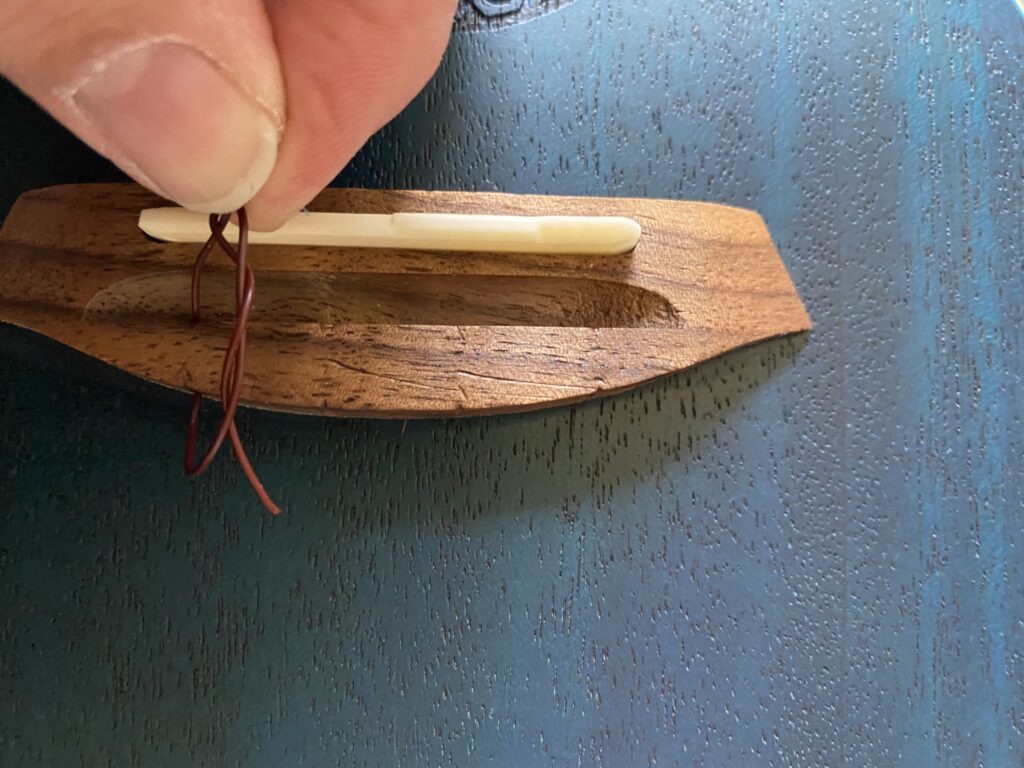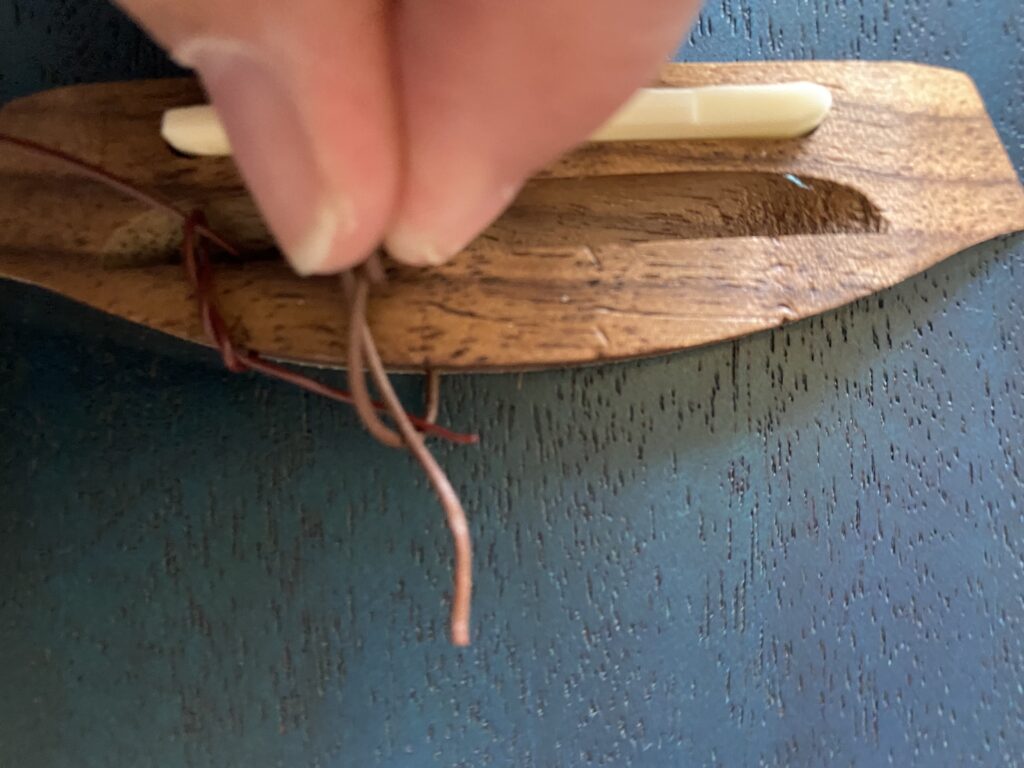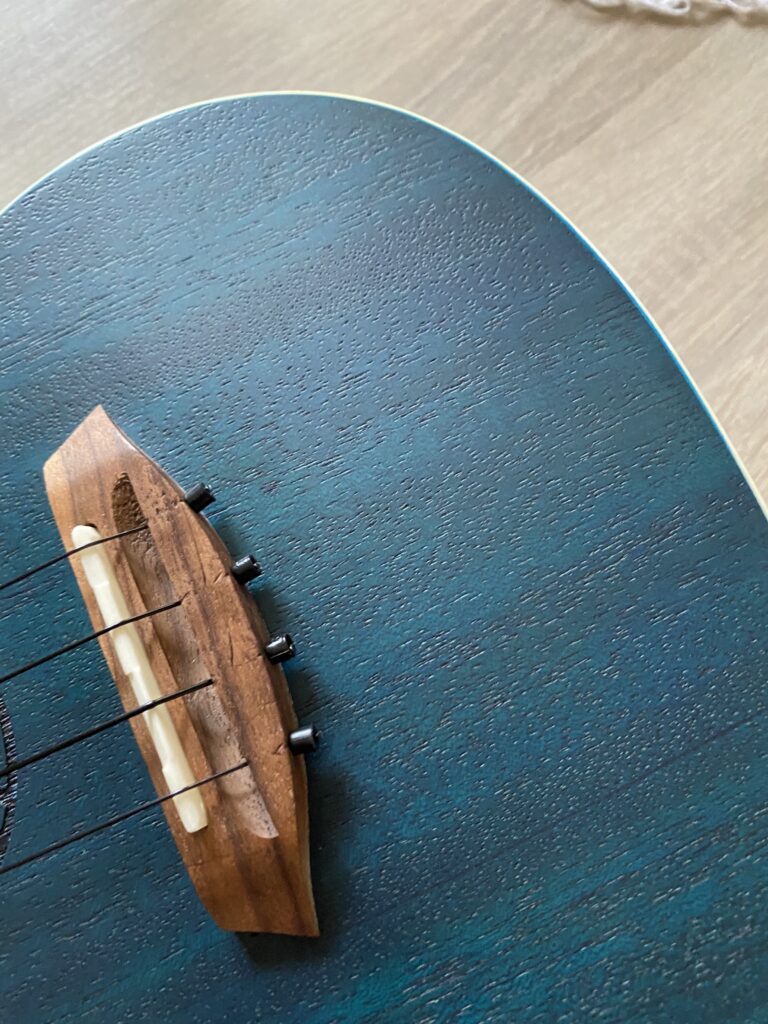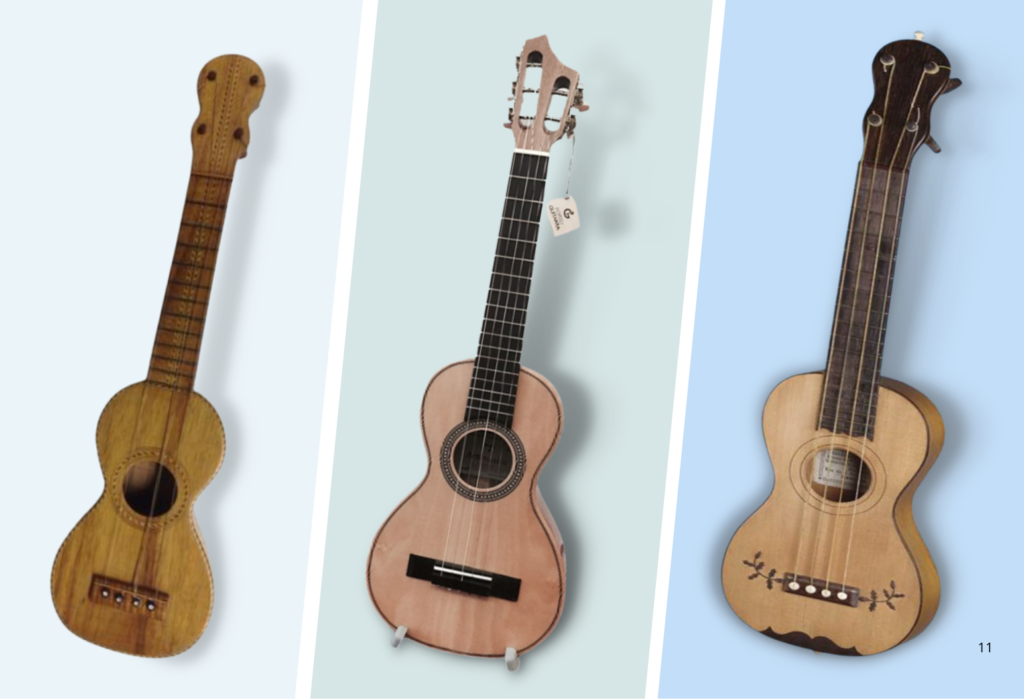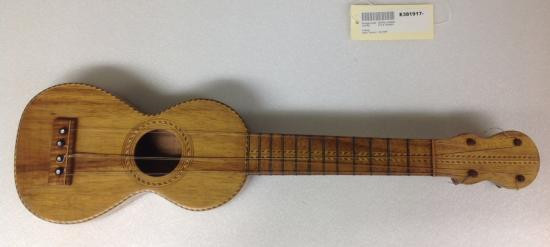by Stefan Harder
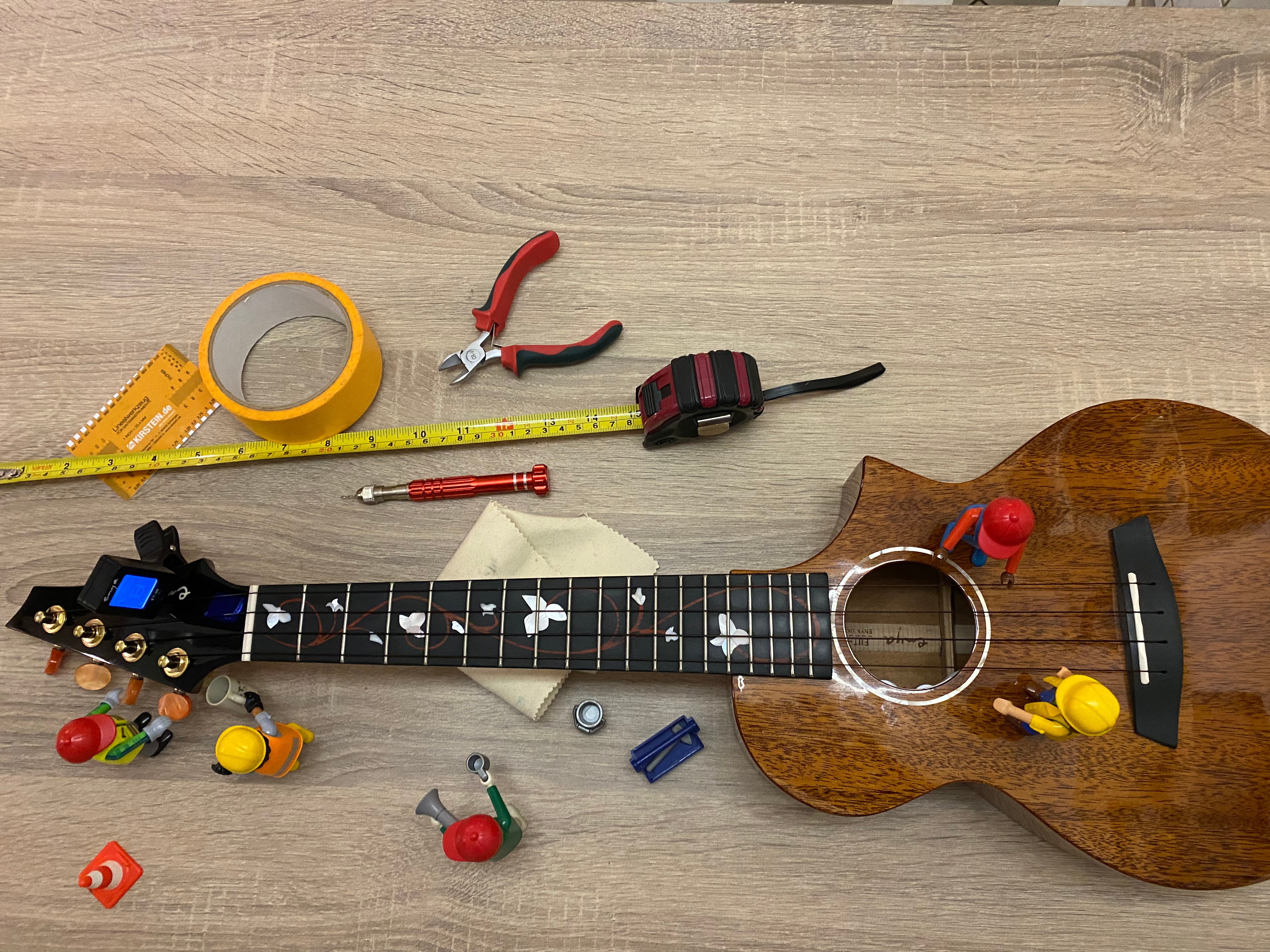
We all know that moment: We play a song on our Ukulele and one of our strings makes a buzzing sound, instead of the desired note. This article will help you to find the reason for that buzz and will show you a way to fix it.
But first we examine our ukulele for reasons, please ask yourself this:
Was it me who made the uke buzz ?
I’m not kidding. Often a string buzzes, when it is not properly fretted.
Make sure your fingers are as close as possible to the fret wires, when you hold a chord or a note.
Ensure that you use the right amount of pressure on the strings, to press them on the fretboard. If you press too lightly, the string may vibrate uncontrollably and cause a buzz.
Do not press too hard either, as that may hurt your fingers.
Don’t let your fingers touch strings that shouldn’t be touched. (This often happens with three finger or barred chords.)
- Make sure your fingers are as close as possible to the fret wires, when you hold a chord or a note.
- Enyure that you use the right amount of pressure on the strings, to press them on the fretboard.
- If you press too lightly, the string may vibrate uncontollably and cause a buzz. Do not press too hard either, as that may hurt your fingers.
- Don’t let your fingers touch strings that should not be touched. (This often happens with three finger or barred chords).
Looking at the action
Working our way down the Ukulele, we will check some things on the fretboard and neck. When your strings are buzzing along the fretboard, the height of your strings (aka the action) might be too low.

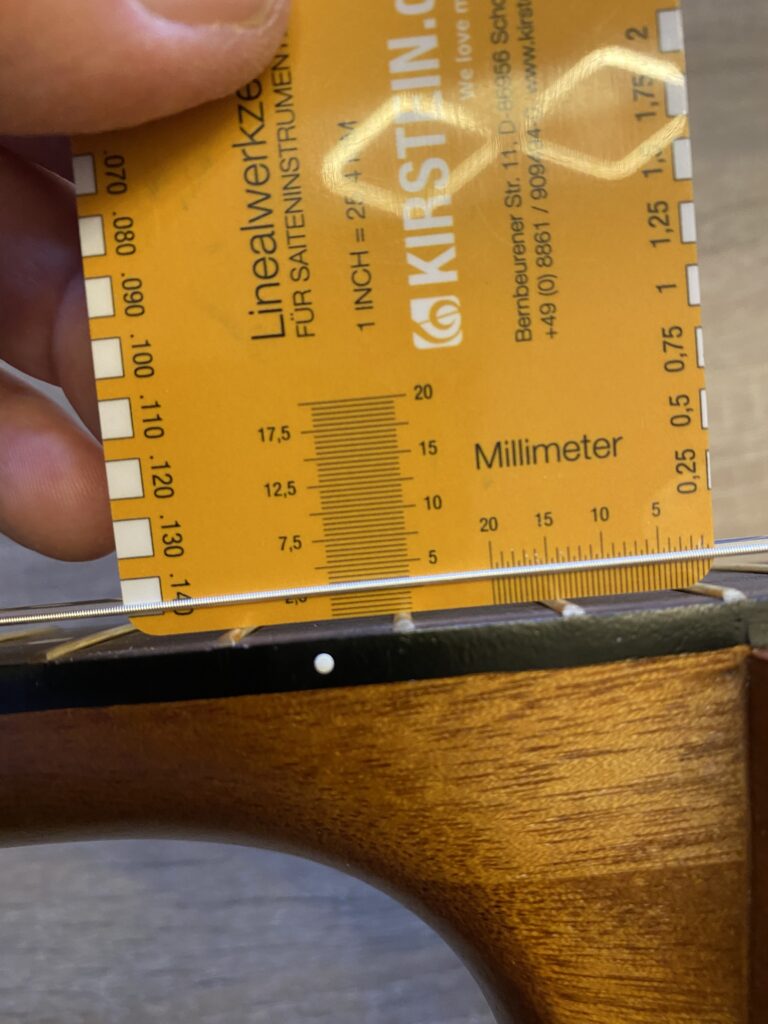
It could be measured with a (string) ruler at the twelfth fret, cause this is the center of the scale, the middle point between the nut and the saddle. If it is lower than approximately
1 millimeter, the action is too low. A value of more than 2.5 millimeters might indicate too high an action, especially if you find playing barre chords up the fret as uneasy.
Humidity
Also the main cause of those issues may lie in the humidity of the location of where the uke is stored, because the neck may bow or back bow.


Humidity is best between 45% to 55% and a temperature level between 20 to 25 degrees Celsius (68-77 OF). Short time of higher or lower humidity or temperature shouldn’t harm your instrument, but constant deviations surely will. Again, look at our 3rd issue of the Ukelandia Magazine (https://ukelandiamagazine.com/here-are-the-issues-of-our-magazine/), where we have an article about ukulele and humidity.
Body of the Ukulele
If you still hear a rattling sound, when you shake your ukulele, take a look inside the body (use a flashlight and a mirror or the camera of a mobile device). It may be a loose cable from a pickup or other hardware that has to be fixed or tightened to stop the buzzing. Search the body for small cracks. If you find one, hold your finger on it and strum the Uke to check whether this crack is actually causing the buzzing. Anyway, take your uke to a luthier to get the cracks repaired.
If the buzzing stops, when you put pressure on the saddle or the bridge, then they are loose. This should be fixed by a luthier
How long have the strings been on the Ukulele ?
How long have they been on the Uke?
Have you ever changed them?
Is it time to change them ?
If you’re in doubt of it, lay your pinky under the a-string, right by the soundhole.
Then slide up to the neck. Repeat this of all strings. If you feel any notches on a string, it is time to change them all. If you haven’t done this before, take a look at our 3rd issue of the Ukelandia Magazine (https://ukelandiamagazine.com/here-are-the-issues-of-our-magazine/), where you will find guided instructions for changing strings.
The headstock
First step: Mute the strings on your instrument and then shake it. If you hear a rattling sound from headstock it is most likely that you have loose hardware on it.
Check if your tuning pegs are loose. If so, tighten their screws. Another issue may be that the gears could be worn and need to be replaced.
Depending on the type of tuners on your ukulele, you might have to tighten screws or nuts, like in the two examples. Be careful with that, “do not screw to tight” especially when you work on the visible side of your instrument.
If you haven’t already trimmed the excessive strings at the tuning pegs, do it now.
Checking the nut
Next we will look at the nut. If your ukulele doesn’t buzz, when you bar an entire fret, but you hear it, when you apply pressure to the strings between the tuning pegs and the nut, then the strings may vibrate inside the nut grooves. This often happens, after installation of a low G string, especially, when you previously had a high G string installed. It may also happen, when you install new strings that have a thicker diameter then the old ones. That is a task you local music store or luthier should handle.


It might be that your nut is too low. Try to fix this with a small strip of paper under the nut, otherwise let a luthier replace the nut.
Here are two examples of strings, running into the grooves of the nut, down to the tuning pegs. Notice, that the grooves are angled downwards to the tuning pegs, so the above ssues won’t occur here.
I hope this article has helped you in your challenge to conquer buzzing strings on your Ukulele. I would appreciate feedback on our website (https://ukelandiamagazine.com) or via email under stefan@ukelandiamagazine.com.
